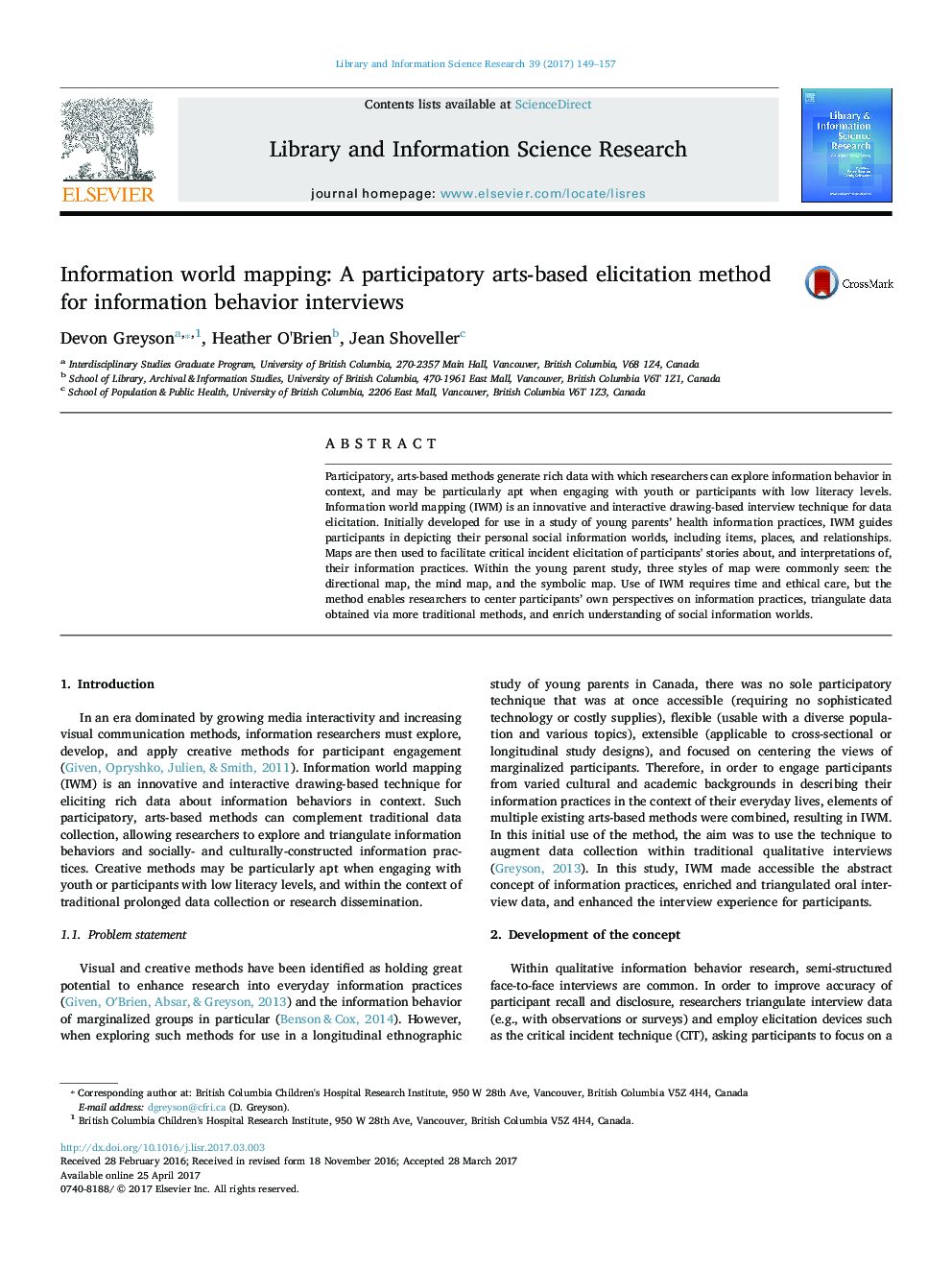| Article ID | Journal | Published Year | Pages | File Type |
|---|---|---|---|---|
| 5123891 | Library & Information Science Research | 2017 | 9 Pages |
â¢Information world mapping is an arts-based elicitation activity developed for use in qualitative interviews.â¢Participants draw or map from their own perspectives their information worlds related to the topic of interest.â¢IWM can complement and triangulate other forms of elicitation, such as surveys and the critical incident technique.â¢By placing depiction of an information world in the hands of participants, IWM can help center marginalized perspectives.â¢Multiple forms of analysis of information world maps are possible, and future research should further develop these.
Participatory, arts-based methods generate rich data with which researchers can explore information behavior in context, and may be particularly apt when engaging with youth or participants with low literacy levels. Information world mapping (IWM) is an innovative and interactive drawing-based interview technique for data elicitation. Initially developed for use in a study of young parents' health information practices, IWM guides participants in depicting their personal social information worlds, including items, places, and relationships. Maps are then used to facilitate critical incident elicitation of participants' stories about, and interpretations of, their information practices. Within the young parent study, three styles of map were commonly seen: the directional map, the mind map, and the symbolic map. Use of IWM requires time and ethical care, but the method enables researchers to center participants' own perspectives on information practices, triangulate data obtained via more traditional methods, and enrich understanding of social information worlds.
